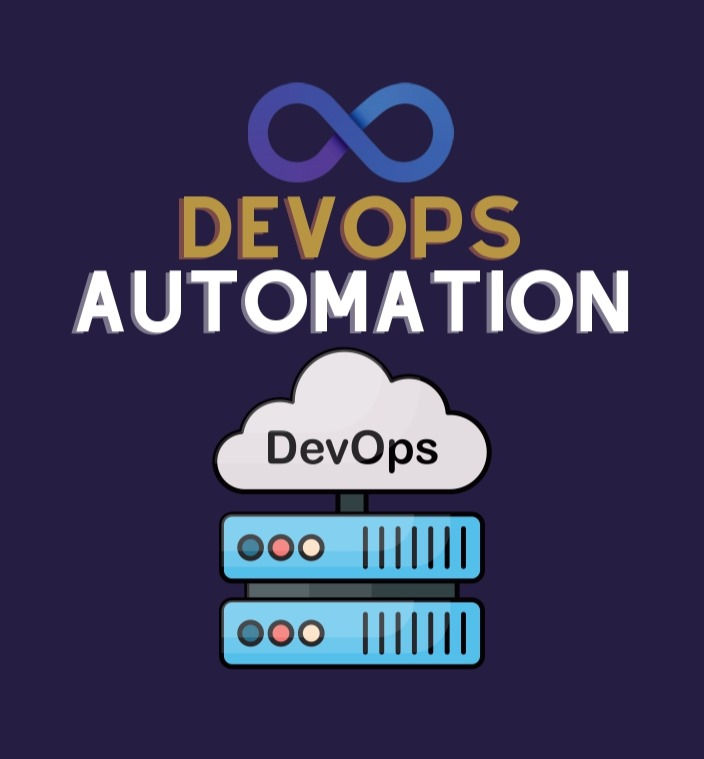DevOps Automation
- Nitin Kapse
- Jan 24, 2024
- 3 min read
Updated: Feb 3, 2024

Introduction:
In the ever-changing landscape of software development and IT operations, the adoption of DevOps use has become a game-changer for organization looking agility, efficiency, and faster time-to-market. At the heart of this transformative shift lies DevOps automation—an instrumental force driving collaboration, consistency, and reliability across the software development lifecycle.
The DevOps Revolution
DevOps, a portmanteau of Development and Operations, is a cultural and organizational approach that emphasizes collaboration and communication between these traditionally siloed teams. It aims to streamline workflows, break down barriers, and increase the overall efficiency of the software delivery process. DevOps Automation takes this philosophy to the next level, introducing a systematic and programmable approach to repetitive and manual tasks, ensuring consistency and repeatability in the development pipeline.
Key Pillars of DevOps Automation
1. Continuous Integration (CI):
DevOps Automation kicks off with Continuous Integration, where code changes are impromptu built, tested, and integrated into a shared repository. This early integration detects issues sooner, fostering a culture of rapid feedback and reducing the risk of defects downstream.
2. Continuous Delivery (CD):
Continuous Delivery extends the automation pipeline beyond integration, allowing for the automated deployment of applications into various environments. This ensures that software is always in a deployable state, enabling organizations to release new features or updates at any moment.
3. Infrastructure as Code (IaC):
Managing infrastructure without machine can be time-consuming and error-prone. Infrastructure as Code allows teams to define and provision infrastructure through code, bringing the same versioning, testing, and collaboration benefits to infrastructure management that code enjoys.
4. Automated Testing:
DevOps Automation places a strong emphasis on automated testing at various levels, from unit tests to end-to-end testing. Automated testing ensures that changes introduced into the codebase do not inadvertently break existing functionality, maintaining a high level of software quality.
5. Continuous Monitoring:
Constant Monitoring is an integral part of DevOps Automation, providing real-time insights into application performance, system health, and user experience. Automated monitoring allows teams to proactively address issues before they impact end-users.
Benefits of DevOps Automation
Speed and Efficiency:
Accelerates the software delivery pipeline, reducing time-to-market for new features and updates.
Reliability and Consistency:
Automation ensures that each step in the development process is executed consistently, reducing the likelihood of human error.
Collaboration and Communication:
promote collaboration between development and operations teams, breaking down silos and improving overall communication.
Scalability:
Enables organizations to scale their development and deployment processes efficiently, adapting to changing business needs.
Cost Savings:
Reduces manual intervention, minimizing operational costs and allowing teams to focus on high-value tasks.
Case Studies: Realizing the DevOps Advantage
Webcraft : Streamlining Deployment with Automated Pipelines
Webcraft implemented DevOps Automation to streamline their deployment process. By adopting CI/CD pipelines, they achieved a 50% reduction in deployment time and significantly decreased the number of post-release issues.
Nobel IT Solutions and Development: Enhancing Collaboration with Infrastructure as Code
Nobel IT Solutions and Development embraced Infrastructure as Code to manage their cloud infrastructure. This not only improved collaboration between development and operations but also enabled them to replicate environments accurately across multiple stages.
Conclusion
DevOps automation is a powerful tool that enables organizations to innovate more quickly while maintaining high standards of quality and reliability. As the DevOps movement continues to evolve, automation is becoming less of a choice and more of a necessity for businesses that want to thrive in today's competitive and dynamic landscape. By integrating people, processes, and technology seamlessly, DevOps automation helps businesses achieve greater efficiency, collaboration, and innovation, leading to success in the future.







Comments